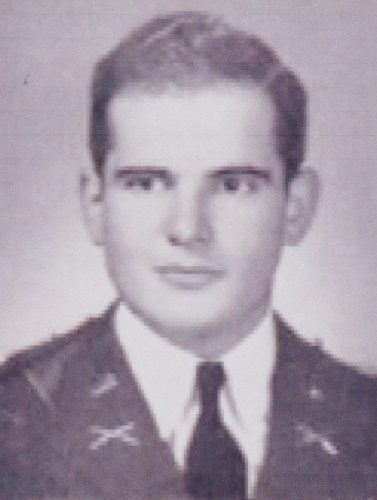- First Lieutenant
- WW II
Biography
Patrick Keller McCaskey was born in South Carolina on 7 November 1920. He was the son of John and Florence McCaskey. The McCaskey family moved to Cranston, Rhode Island when Patrick was a youngster. He was a 1938 graduate of LaSalle Academy, Providence, Rhode Island, where he was an outstanding scholar. Patrick entered Rhode Island State College (RISC) in September 1938 with the class of 1942, majoring in Science/Biology. He was a member of Alpha Tau Gamma Fraternity and Scabbard & Blade Military Society. Patrick participated in the Rhode Island State College Army ROTC program and was commissioned a Second Lieutenant of Infantry upon graduation in June 1942.
Immediately following graduation, Patrick attended the Infantry Office Course and reported to Camp Gruber, Oklahoma, for assignment to the 351st Infantry Regiment, 88th Infantry Division. After many months of training within the United States, the 88th Infantry Division deployed to Italy in February 1944. The 88th Division scored a notable “first” by becoming the first of the new all-Selective Service Infantry Divisions to deploy overseas in World War II.
After a period of training, the 88th Infantry Division opened its assault on the Gothic Line on 21 September 1944 and advanced rapidly, taking Mount Battaglia on 28 September. The Germans savagely counterattacked, and heavy fighting continued on the line toward the Po Valley through January 1945. First Lieutenant Patrick K. McCaskey was killed during the battle for Anzio and Po Valley on 29 October 1944. He was awarded the Purple Heart Medal and the Combat Infantry Man’s Badge. His body was returned to the United States for reburial with full military honors in the Post Cemetery, Fort Adams, Rhode Island on 13 November 1948.
First Lieutenant Patrick K. McCaskey was a son of Rhode Island State College who answered the call to service during World War II and gave his life in service to Rhode Island and America. He was a member of the “Greatest Generation.”
Education
1942

